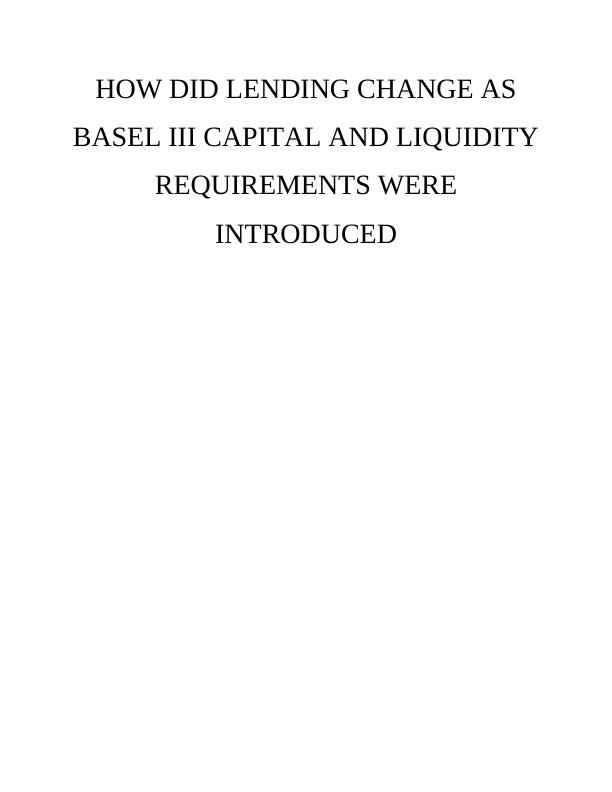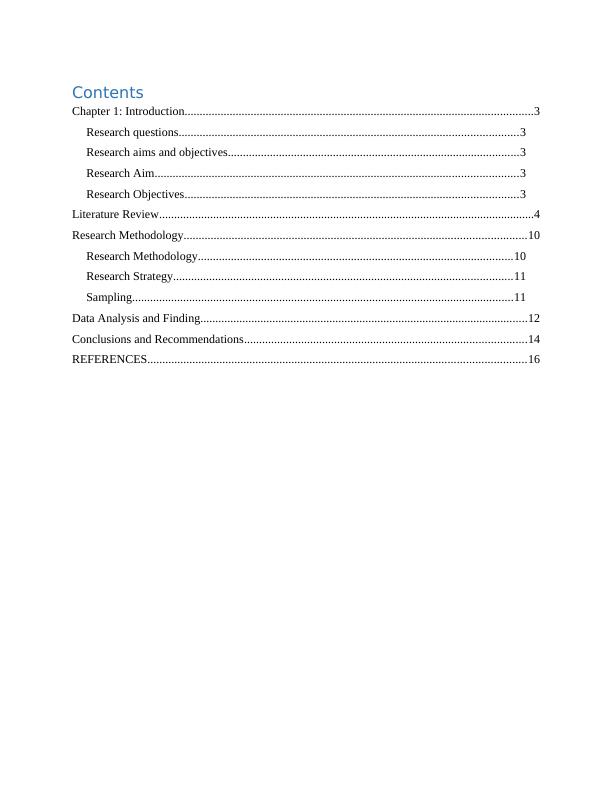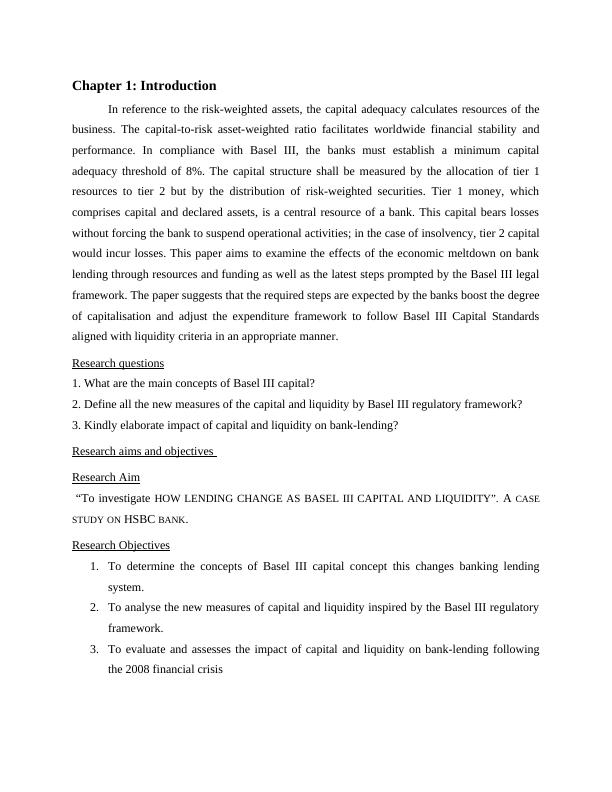How Did Lending Change as Basel III Capital and Liquidity Requirements Were Introduced
17 Pages5692 Words1 Views
Added on 2023-01-09
About This Document
This paper investigates the changes in lending practices as Basel III capital and liquidity requirements were introduced. It explores the concepts of Basel III capital, analyzes the new measures of capital and liquidity, and evaluates the impact of these requirements on bank lending following the 2008 financial crisis. The case study focuses on HSBC Bank.
How Did Lending Change as Basel III Capital and Liquidity Requirements Were Introduced
Added on 2023-01-09
ShareRelated Documents
End of preview
Want to access all the pages? Upload your documents or become a member.
Basel III Framework: Importance, Impact, Bank Failures, Shadow Banking, Small Business Finance, Financial Innovation
|10
|2860
|404
Bank Regulatory Framework and Earning Power
|10
|2568
|41
Basel III Liquidity Requirement in Banking Sector 15 15 Basel III Liquidity Requirement in Banking Sector
|16
|3911
|173
Significance of Financial Measures in Banking - HSBC UK
|7
|1655
|1
Assessment of Capital and Leverage Regulation after the World Financial Crisis
|6
|1117
|138
Economic Fallout of Brazilian Banking System: A Comparative Study of 1980 and 2007
|18
|4114
|364




